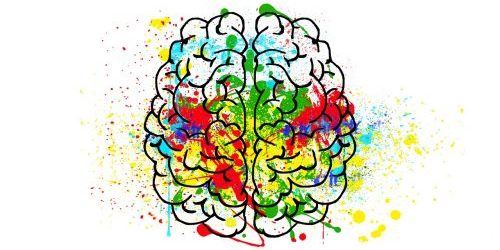
Motivating Your Students to Learn: What Works, What Doesn’t
Think back to a time when you were really motivated to learn something, particularly when you felt the activity was engaging and joyful. It could have been a class, an event, a work project or anything that sustained your long-term interest. What exactly was it that made it a joyful, engaging learning experience? What made you continue with the activity?
In this post, we explore the idea of motivation to learn using two guidelines within the Universal Design for Learning framework, specifically on developing interest toward learning and helping students sustain their efforts over the course of a semester.
What Motivates Learning? An Overview
What does it mean to ‘motivate’ students to learn? There are two built-in motivational behaviors that inspire us to do something: intrinsic and extrinsic motivation (Bénabou & Tirole, 2003). Understanding the difference between these two can help you understand why students are likely (or not) to engage productively and perhaps joyfully during a class, project, or assignment.
Intrinsic motivation expresses itself when we complete activities for their own sake simply because we enjoy them. This could be playing a sport we like, reading a novel, planting a garden – any action where the activity is inherently enjoyable. Meta-analyses on intrinsic motivation (Taylor et. al. 2014; Froiland and Worrell, 2016, Cerasoli et. al., 2014) demonstrated that intrinsic motivation played a significant role in student achievement as well as predicting student engagement that led to improved outcomes across multi-cultural populations.
On the other hand, extrinsic motivation relies on external pressures or incentives from others that promote learning. Perhaps it is studying hard for an exam only to earn good grade, working only for money, or learning how to do your taxes. In a learning context, examples of extrinsic motivation applied to learning often appear as tests and quizzes, awards, or even fear-based ‘encouragement’ (e.g., “You better know it. It will be on the test!”). Meta analysis research demonstrates that a heavy emphasis on extrinsic motivators undermines inherent interest in learning, which decreases long-term commitment in learning activities (Deci, Koestner, & Ryan, 1999).
That said, it is possible to be both intrinsically and extrinsically motivated at the same time. For example, a student may want to earn a good grade applying CPR techniques on a model ‘patient’ to show they have mastered the skill (extrinsic) but also gain the satisfaction that they may one day save a life (intrinsic). This example illustrates that motivational orientations can be complex and, when married together, intrinsic and extrinsic behaviors do not need conflict for interest in learning to be maintained. Finding the right balance between the two is the key to sustained motivational efforts.
Before proceeding, watch the short video below as an overview on intrinsic and extrinsic motivation.
The Three Needs for Intrinsic Motivation
If intrinsic motivation is so powerful for learning, then how do we encourage it in our teaching? Research on human development shows that there are three basic needs we need satisfied to promote intrinsic motivation while learning: autonomy, competency and relatedness. These three needs make up what is called Self-Determination Theory (SDT) of motivation (Ryan & Deci, 2000).
Before continuing, take two minutes and watch the following video on how Richard Ryan, the co-author of SDT, explains these three basic needs for intrinsic motivation to flourish.
To sum up, click each of the boxes below to review each need that enhances intrinsic motivation.
Autonomy
The desire to feel in control of our choices and actions.
Relatedness
The desire for connection and belonging to others.
Competence
The need to feel capable and effective in our endeavors.
Let’s examine these three needs in detail below as it relates to classroom instructions.
Autonomy
We all want some choice in how we engage with the world. Choice makes us feel that we have agency which leads to a sense of ownership and pride in the work and play we do.
In a classroom setting, autonomy is about giving strategic choices and agency for learning surrounding course outcomes and assessments. To illustrate, imagine that students are assigned to design a software database to solve particular problem. An autonomy orientation for the assignment would encourage the problem to be chosen by the students surrounding a perceived need (e.g., designing a database for an online sporting goods store). Students meet the outcome for the course – designing and implementing a database – but have been given choice of problem to apply their database knowledge as well as control of its design. That is autonomy in action.
Furthermore, motivating student expression of learning can reach beyond traditional text-based products. Consider choices for expressing understanding using graphic organizers (e.g., concept maps, mind maps, flowcharts, Venn diagrams), creating video, and providing oral communication options to express understanding.
During the act of teaching, seek out student input and ideas as you deliver your lessons. By doing so, you insist that their voice matters thereby amplifying their agency to freely express themselves during the course of a lesson.
Finally, when giving autonomy there comes risk. When given agency to choose, sometimes unforeseen obstacles or struggles present themselves that might not have been apparent in an otherwise instructor-chosen activity. So be prepared to empathize with your students and understand their struggles as they progress. If you do suggest courses of action, then take care that it does not take away student agency and ownership of the activity. This may inadvertently reduce intrinsic motivation to complete the activity.
Relatedness
Learning is often a social act. We rarely learn in isolation. In fact, creating, sharing and consuming knowledge and ideas connects us all in our highly connected world. And it not just a simple transaction of getting and giving knowledge. We often enjoy the relationship with others that accompanies that transaction, building a sense of community, trust and connectedness as we do so.
How can you take advantage of our built-in desire to socially connect? As faculty, start by modeling relatedness as you make yourself socially present during your class. Circulate the room and chat with your students (e.g., simply asking “How are you doing today?”) and get to know their names as best you can. When teaching online, enter the breakout rooms regularly to establish your presence and desire to connect. Either way, the act of building community and relatedness ultimately starts with you.
Next, to help students connect with each other during your lessons use a variety of teaching strategies that help build community. For example, think-pair-share, small group discussion and, if teaching online, using Mentimeter and breakout rooms within Zoom will help establish connection to each other. A quick tip: if you teach in-person, consider a ‘one empty seat apart’ strategy. When students come into class, request they sit at a table or in the lecture hall where they are separated by, at most, one empty seat from someone else. Students can then lean into their partner(s) for any activity that involves collaboration with those strategies mentioned above yet still respecting their need for space and privacy.
Competency
We all enjoy getting ‘good’ at something. Whether it’s mastering a skill (e.g., a tennis serve) or developing knowledge expertise in some field of study (e.g., astrophysics), we all enjoy the validation that a display of competency provides. Your students are no different.
In an outcomes-based education, take the time needed during classroom instruction to help students develop a sense of mastery where students can display and practice their competence surrounding important concepts from your lessons. As they do so you can provide quick, corrective feedback that help students develop even deeper competency whether it be in the application of a mathematical formula, conducting CPR, or building a masonry wall.
That said, competency requires giving opportunity to practice, sometimes lots of it. Build within your lessons opportunities to apply the concepts being taught. Recall strategies such as think-pair-share and Mentimeter are some of the simpler activities that you can use to develop competency within your students when used regularly throughout your course.
Be a Motivating Force in Your Classroom
Go back now to that joyful, engaging time of learning you experienced. Ask yourself how those three needs – autonomy, relatedness and competency – manifested themselves during your experience. Which of these did you feel were the most important to you? And do you think these would be important for your students as well in during your teaching?
Finally, think of autonomy, relatedness and competency as the fertilizer for the growth and maintenance of learning in your garden of lessons. Acknowledging and acting on these needs are foundational in developing the best experiences for your students and encouraging only their best contributions toward their education.
References
Cerasoli, C. P., Nicklin, J. M., & Ford, M. T. (2014). Intrinsic motivation and extrinsic incentives jointly predict performance: a 40-year meta-analysis. Psychological bulletin, 140(4), 980–1008. https://doi.org/10.1037/a0035661
Deci, E. L., Koestner, R., & Ryan, R. M. (1999). A meta-analytic review of experiments examining the effects of extrinsic rewards on intrinsic motivation. Psychological bulletin, 125(6), 627.
Froiland, J. M., & Worrell, F. C. (2016). Intrinsic motivation, learning goals, engagement, and achievement in a diverse high school. Psychology in the Schools, 53(3), 321-336.
Nalipay, M. J. N., King, R. B., & Cai, Y. (2020). Autonomy is equally important across East and West: Testing the cross-cultural universality of self-determination theory. Journal of adolescence, 78, 67–72. https://doi.org/10.1016/j.adolescence.2019.12.009
Roland Bénabou, Jean Tirole, (2003) Intrinsic and Extrinsic Motivation, The Review of Economic Studies, Volume 70, Issue 3, Pages 489–520, https://doi.org/10.1111/1467-937X.00253
Ryan, R. M., & Deci, E. L. (2000). Self-determination theory and the facilitation of intrinsic motivation, social development, and well-being. American Psychologist, 55(1), 68–78. https://doi.org/10.1037/0003-066X.55.1.68
Taylor, G., Jungert, T., Mageau, G. A., Schattke, K., Dedic, H., Rosenfield, S., & Koestner, R. (2014). A self-determination theory approach to predicting school achievement over time: The unique role of intrinsic motivation. Contemporary educational psychology, 39(4), 342-358.






